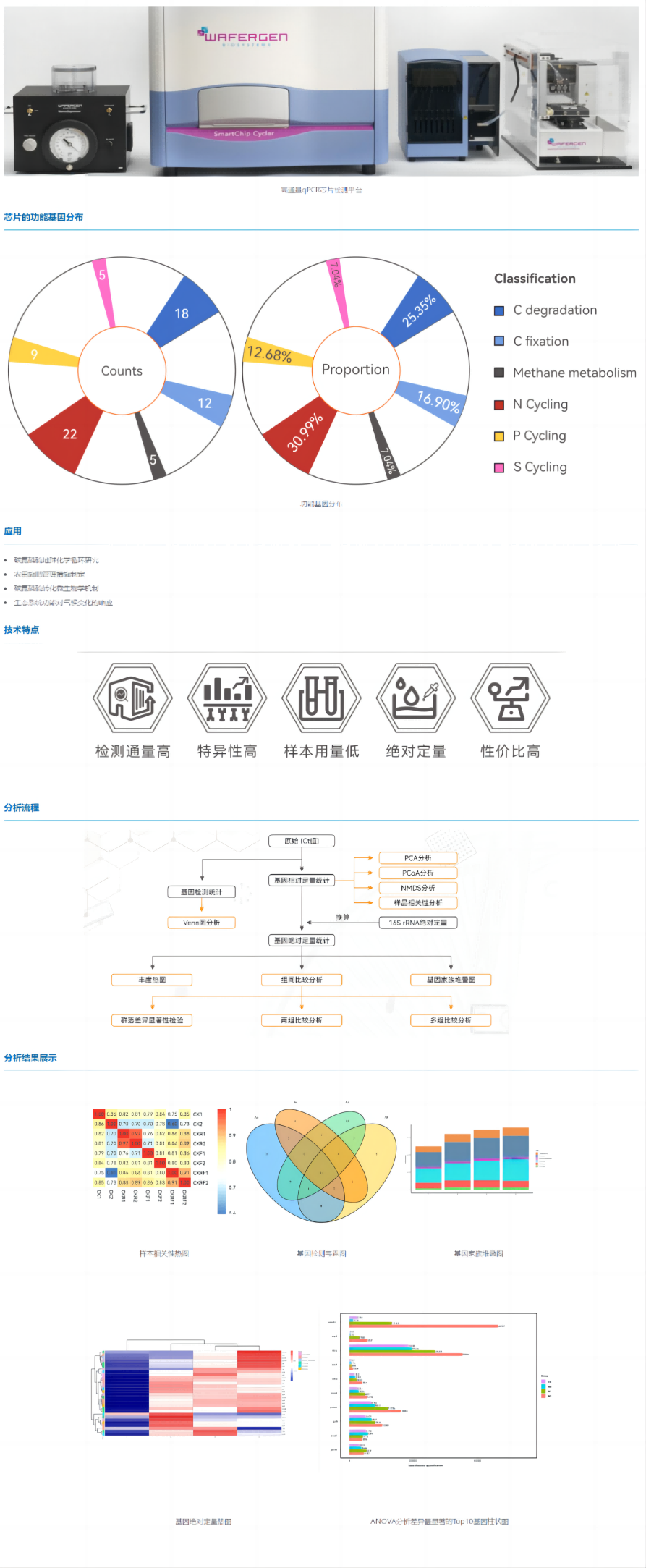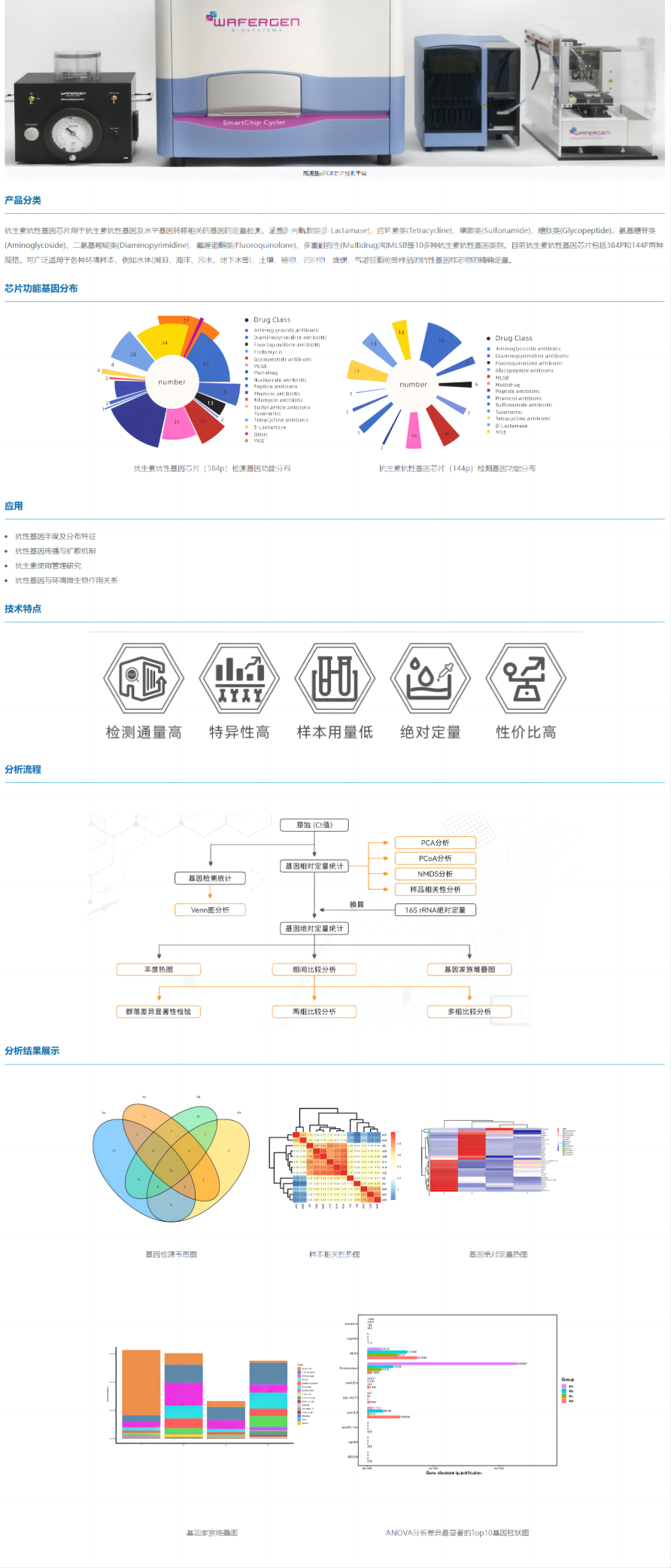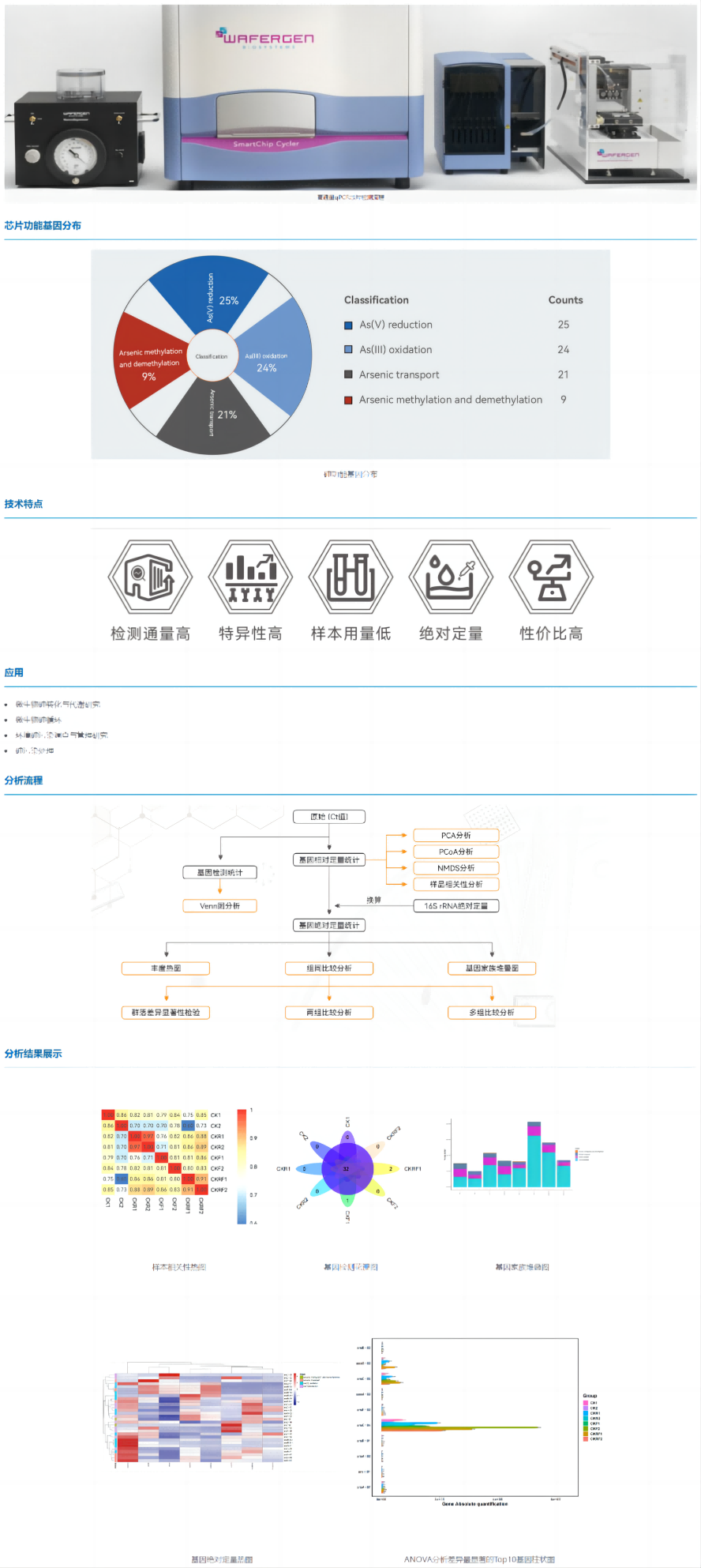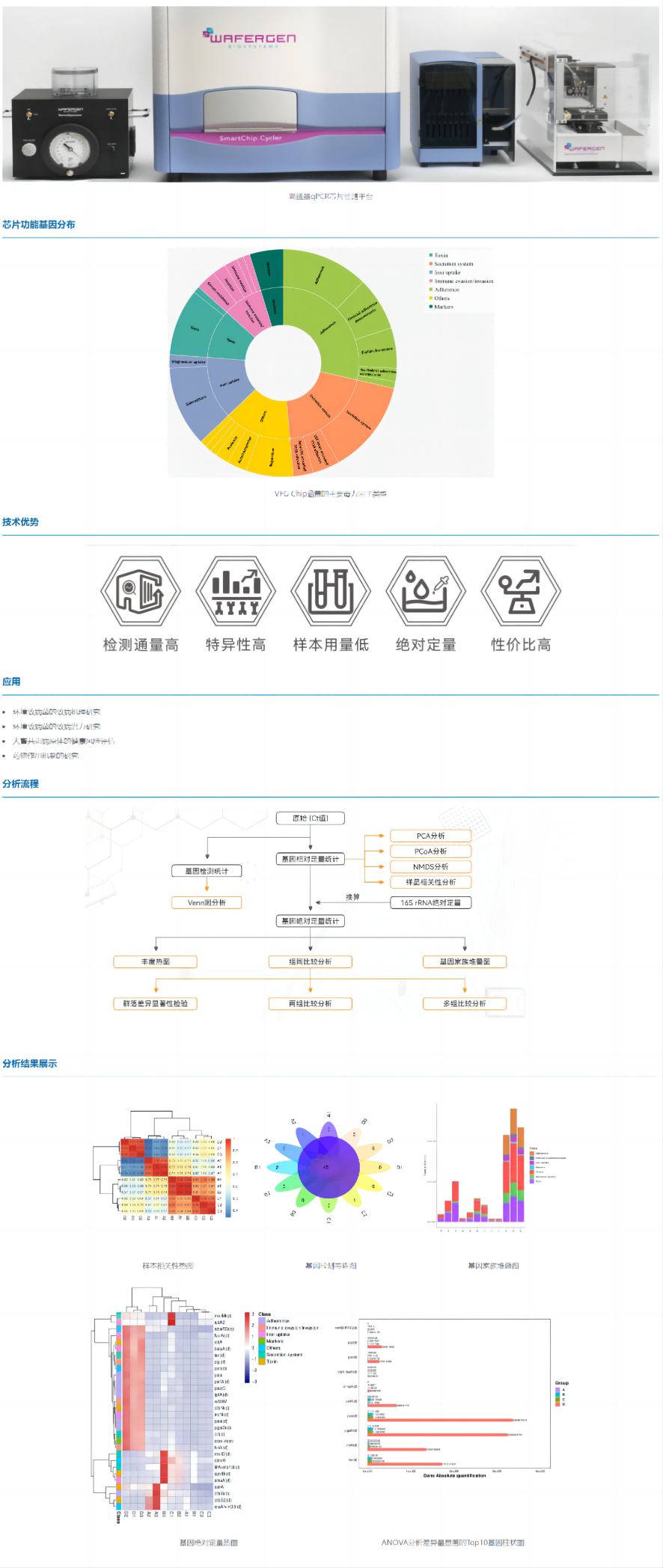
Based on high-throughput qPCR (HT-qPCR) quantitative detection technology, genes related to biogeochemical cycles such as carbon, nitrogen, phosphorus and sulfur were quantitatively studied. The carbon, nitrogen, phosphorus and sulfur functional gene chip contains 72 pairs of primers, targeting 64 functional genes related to carbon, nitrogen, phosphorus, sulfur and methane metabolism and 1 16S rRNA gene of microorganisms. The carbon, nitrogen, phosphorus and sulfur functional gene chip has the advantages of high throughput, low sample volume, low cost, short cycle and simple operation, and can be widely applied to various types of samples. Determining the abundance of microbial functional properties in nutrient transformation, including carbon, nitrogen, phosphorus, and sulfur, is of great significance for the comprehensive study of microbial-mediated ecological processes and biogeochemical cycles in various environmental contexts, including current global change.


Based on the high-throughput qPCR (HT-qPCR) quantitative detection technology, the corresponding qPCR primers were designed for antibiotic resistance genes and packaged into thin-layer metal alloy nanopore chips to obtain high-throughput qPCR chips. At the same time, based on the SmartChip Real-Time PCR System, high-throughput automatic micro-sampling and gene quantification analysis platform, 5,184 reactions and data analysis can be completed at one time and at high speed, and the target gene detection and quantitative calculation with high efficiency, high throughput, high accuracy and high sensitivity can be carried out on multiple samples, avoiding the shortcomings of the traditional qPCR method such as single, high cost and low efficiency of genetic detection.


Based on high-throughput qPCR (HT-qPCR) quantitative detection technology, it is used for the comprehensive analysis of the quantitative detection of genes involved in the microbial arsenic (As) cycle. The arsenic functional gene chip contains 80 pairs of primers, targeting 19 microbial-mediated functional genes for As(V) reduction, As(III) oxidation, As transport, As methylation and demethylation, and one 16S rRNA gene. Arsenic functional gene chips have the advantages of high throughput, low sample volume, low cost, short cycle, and simple operation, and can be widely used in various types of samples. Arsenic functional microarrays offer unprecedented potential for targeted and comprehensive quantification of As genes in environmental samples.


Based on high-throughput qPCR (HT-qPCR) quantitative detection technology, it is used for the quantitative study of genes related to 9 metal homeostasis and horizontal gene transfer, including 95 gene primers, covering metal efflux, redox reactions, transcriptional regulation, sequestration, Metal resistance genes (MRGs) related to biotransformation and uptake, and mobile genetic elements (MGEs) associated with metal resistance genes. MRG Chip has the advantages of high throughput, low sample size, low cost, short cycle time, and simple operation, and can be applied to a wide range of sample types for the study of prokaryotic metal resistance and microbial-mediated metal biogeochemical processes related to environmental pollution and remediation, agricultural management, human, animal, and environmental health.


Based on high-throughput qPCR (HT-qPCR) quantitative detection technology, it was used to quantify 96 virulence factor genes (VFGs) of four typical zoonotic pathogenic bacteria (K. pneumoniae, A. baumannii, E. coli and S. enterica), including 120 pairs of primers, and participated in the encoding of five major virulence factor types (Toxin, Adherence, Secretion system, Immune evasion/invasion、Iron uptake)。 VFG Chip has the advantages of high throughput, low sample size, low cost, short cycle time, and simple operation, and can be widely applied to various types of samples, providing a powerful tool for the comprehensive quantification of VFGs in the environment, thus providing a new idea for assessing the health risk of zoonotic pathogens in the environment.
